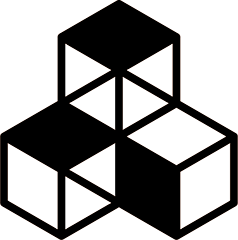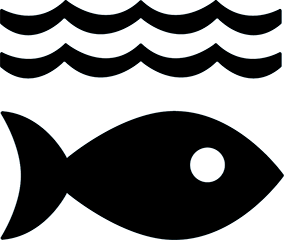Biocement from ReefCycle is a durable and marine-safe cement inspired by shell formation.
Benefits
- Reduce GHG emissions from cement production
- Engineer environmentally-friendly building materials
- Improve coastal resilience
- Foster biodiversity
Applications
- Coastal Infrastructure
- Erosion control
- Marine habitats formation
UN Sustainable Development Goals Addressed
-

Goal 9: Industry Innovation & Infrastructure
-

Goal 11: Sustainable Cities & Communities
-

Goal 14: Life Below Water
The Challenge
Rising sea levels threaten coastal communities with increased flooding, erosion, and the escalating impacts of storm surges. This can disproportionately affect vulnerable populations, often highlighting important socioeconomic disparities.
Additionally, cement is the second most used material on earth after water. Playing an essential role in shaping the built environment, cement will be critical for future construction of climate-resilient coastlines. However, this is projected to come at a steep environmental cost, as cement production is responsible for 8% of global CO₂ emissions due to its energy and carbon-intensive manufacturing processes.
Biological Model
Biomineralization occurs when living organisms use minerals they absorb from their environment to form strong, durable, and hard building materials. For example, oysters and other mollusks use absorbed minerals to produce a “glue” that allows them to attach themselves to rocks and to one another, effectively growing into their own reefs. The biomineralized building material they produce is effective and strong, resisting wave energy and corrosive salt water.
Innovation Details
The team at ReefCycle, inspired by the natural process of shell-formation via biomineralization, create carbon-neutral alternatives to traditional cement to protect coastal communities and ecosystems. Their innovative approach harnesses enzymes derived from drought-resistant and nitrogen-fixing plants, often used in regenerative agriculture, to the biomineralization process, producing marine-safe building materials.
To begin the process, chemists extract plant enzymes from nitrogen-fixing soybeans using a low-energy process. Next, these enzymes are introduced into a bath containing crushed waste materials, such as eggshells and oyster shells. This enzymatic reaction facilitates the formation of calcium carbonate, which binds the materials together. After three days, the liquid solution is drained, revealing a bio-concrete composed of crystalline calcite, chemically identical to oyster shells, making it the ideal medium for reef restoration and constructing sustainable coastal infrastructure.
The Human Factor
Mary Lempres, the visionary CEO behind ReefCycle, first conceived the idea during her Master’s thesis at Pratt Institute, New York. Her research focused on “Nature Co-Design” as a way to address climate challenges through inclusive design. As an industrial designer, Mary saw firsthand the environmental cost of materials and manufacturing, igniting her passion for eco-conscious innovation. Mary’s expertise in materials research, prototyping, biomaterials, and life-centered design has empowered her to collaborate with nature and communities alike, challenging norms and rethinking value systems through sustainable design. For Mary, ReefCycle represents more than a cement solution, it’s a movement to redefine materials for a healthier planet.
Ray of Hope Accelerator
The Ray of Hope Accelerator supports an annual cohort of ten high-impact nature-inspired startups representing various sectors and regions addressing the world’s biggest environmental and sustainability challenges. The accelerator builds upon years of experience as the Ray of Hope Prize (2020-2023), which was created in honor of Ray C. Anderson, a business and sustainability leader and founder of Interface, Inc. ReefCycle LLC was a participant of the 2024 Ray of Hope Accelerator.
AI on AskNature
This page was produced in part with the assistance of AI, which is allowing us to greatly expand the volume of content available on AskNature. All of the content has been reviewed for accuracy and appropriateness by human editors. To provide feedback or to get involved with the project, contact us.









